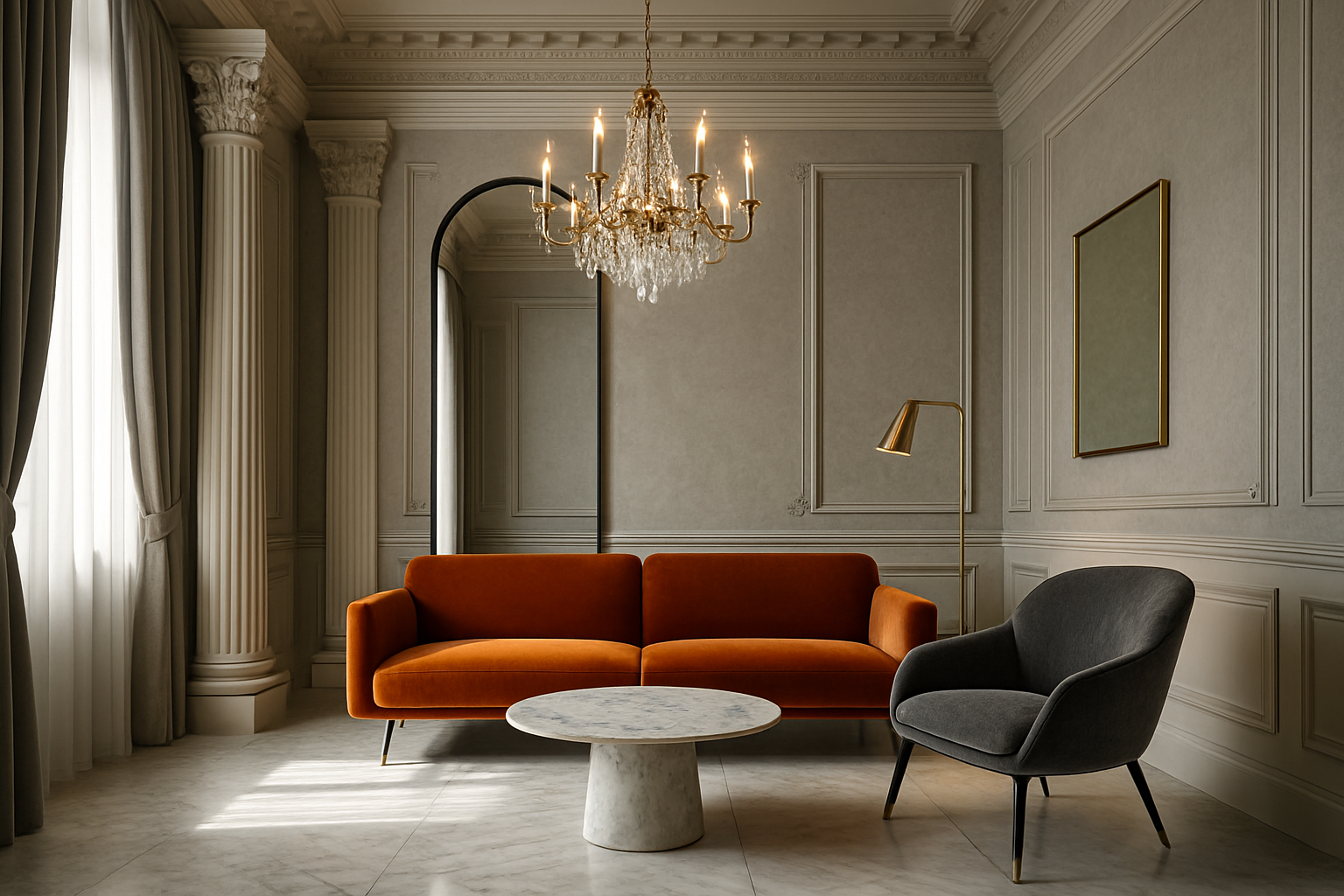Neoclassical Fusion: Blending Timeless Elegance with Modern Flair
In the ever-evolving world of interior design, a captivating trend is emerging that marries the grandeur of classical aesthetics with the sleek lines of contemporary style. Neoclassical fusion, a sophisticated approach to home decor, is captivating homeowners and designers alike with its unique blend of timeless elegance and modern sensibilities. This innovative design movement reimagines traditional neoclassical elements through a contemporary lens, creating spaces that are both luxurious and livable.

The Roots of Neoclassical Design
Neoclassical design finds its origins in the 18th century, drawing inspiration from the classical architecture of ancient Greece and Rome. This style emerged as a reaction to the ornate excesses of Baroque and Rococo, favoring instead clean lines, symmetry, and a sense of order. Characterized by elements such as columns, pediments, and geometric shapes, neoclassical design has long been associated with elegance and sophistication.
In its traditional form, neoclassical interiors often featured grand proportions, neutral color palettes, and luxurious materials like marble and gilt. Decorative motifs such as laurel wreaths, acanthus leaves, and Greek key patterns were common, adding a touch of refinement to walls, furniture, and accessories. This style has remained influential throughout the centuries, periodically resurging in popularity and adapting to contemporary tastes.
The Modern Twist on Neoclassical Elements
Today’s neoclassical fusion takes the core principles of traditional neoclassicism and reimagines them for the 21st century. Designers are embracing the clean lines and symmetry of the style while infusing spaces with modern materials, colors, and technologies. The result is a look that feels fresh and current while maintaining a connection to historical design traditions.
One key aspect of this modern interpretation is the use of unexpected color palettes. While traditional neoclassical interiors often stuck to neutral tones, contemporary designers are introducing bold hues and striking contrasts. Deep jewel tones like emerald green or sapphire blue might be paired with classic white moldings, creating a dramatic and sophisticated atmosphere.
Balancing Old and New in Furniture Selection
Furniture plays a crucial role in achieving the perfect neoclassical fusion look. The key is to strike a balance between classical pieces and modern designs. For example, a sleek, minimalist sofa might be paired with an ornate gilded mirror or a traditional Chesterfield armchair could be placed next to a contemporary glass coffee table.
Designers are also reimagining classic furniture forms with modern materials and finishes. A Louis XVI-style chair, for instance, might be updated with a neon-colored acrylic frame or upholstered in a bold, graphic print. This juxtaposition of old and new creates visual interest and prevents the space from feeling like a museum replica.
Architectural Details: The Backbone of Neoclassical Fusion
The architectural elements of a space are fundamental to achieving a successful neoclassical fusion design. Crown moldings, wainscoting, and ceiling medallions provide the classical framework, but their application in modern interiors is anything but traditional. Designers are experimenting with oversized moldings, unexpected materials like polished steel or matte black finishes, and unconventional placements to create striking visual effects.
Another innovative approach is the use of trompe l’oeil techniques to suggest classical architectural features in spaces where they don’t physically exist. Digital printing technology allows for the creation of hyper-realistic wallpapers that mimic intricate plasterwork or faux marble columns, bringing a touch of neoclassical grandeur to even the most contemporary of spaces.
Lighting: Where Tradition Meets Innovation
Lighting fixtures offer an excellent opportunity to showcase the fusion of neoclassical and modern design. Crystal chandeliers, a staple of traditional neoclassical interiors, are being reimagined with LED technology and avant-garde forms. These updated fixtures maintain the glamour and sparkle of their predecessors while incorporating energy-efficient features and contemporary aesthetics.
Sconces and table lamps also play a significant role in neoclassical fusion interiors. Designers might pair a set of traditional candle-style wall sconces with a ultra-modern floor lamp, creating an intriguing dialogue between different eras of design. The key is to maintain a sense of balance and intentionality in these juxtapositions.
Accessorizing with a Neoclassical Fusion Mindset
The art of accessorizing in a neoclassical fusion interior requires a thoughtful approach. Classical sculptures or busts can be displayed alongside contemporary art pieces, creating an eclectic gallery that spans centuries of artistic expression. Mirrors, a key element in traditional neoclassical design, are being used in innovative ways—oversized floor mirrors with ornate frames might lean casually against a wall, or a collection of small, gilded mirrors could be arranged in a modern, asymmetrical pattern.
Textiles also play a crucial role in softening the potentially austere lines of neoclassical architecture. Luxurious fabrics like velvet and silk are being used in unexpected ways, such as in geometric patterned curtains or on modernist furniture pieces. The juxtaposition of these rich materials with sleek, contemporary elements creates a sense of warmth and inviting comfort.
The Future of Neoclassical Fusion
As we look to the future, neoclassical fusion design shows no signs of waning in popularity. Its ability to bridge the gap between historical elegance and contemporary living makes it a versatile choice for a wide range of interiors. We can expect to see further innovations in this style, perhaps incorporating elements of sustainability and smart home technology while maintaining its core aesthetic principles.
The enduring appeal of neoclassical fusion lies in its ability to create spaces that feel both timeless and of-the-moment. By honoring the past while embracing the present, this design approach offers a sophisticated solution for those seeking a home that is both elegant and livable. As we continue to redefine our relationships with our living spaces, neoclassical fusion stands as a testament to the power of thoughtful design in creating environments that are both beautiful and meaningful.





